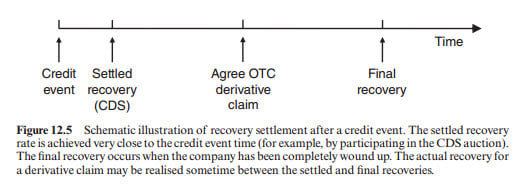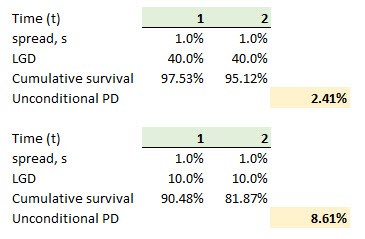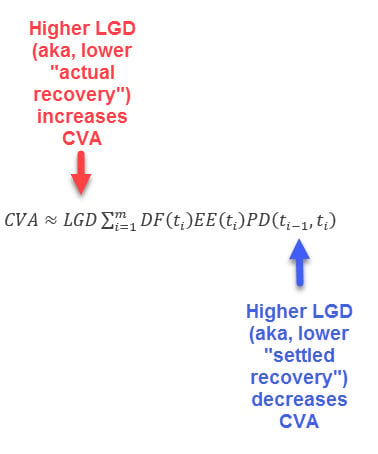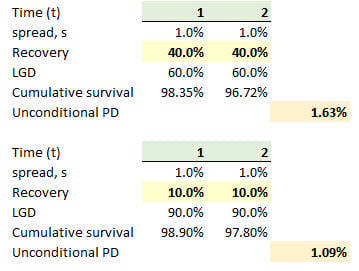saurabhpal49
New Member
Hi David ,
Could you please explain the difference between settled and actual recovery rates,with an example
And why does 10% settled and 40% actual recovery has low cva compared to 40% of both
Thanks
Could you please explain the difference between settled and actual recovery rates,with an example
And why does 10% settled and 40% actual recovery has low cva compared to 40% of both
Thanks




